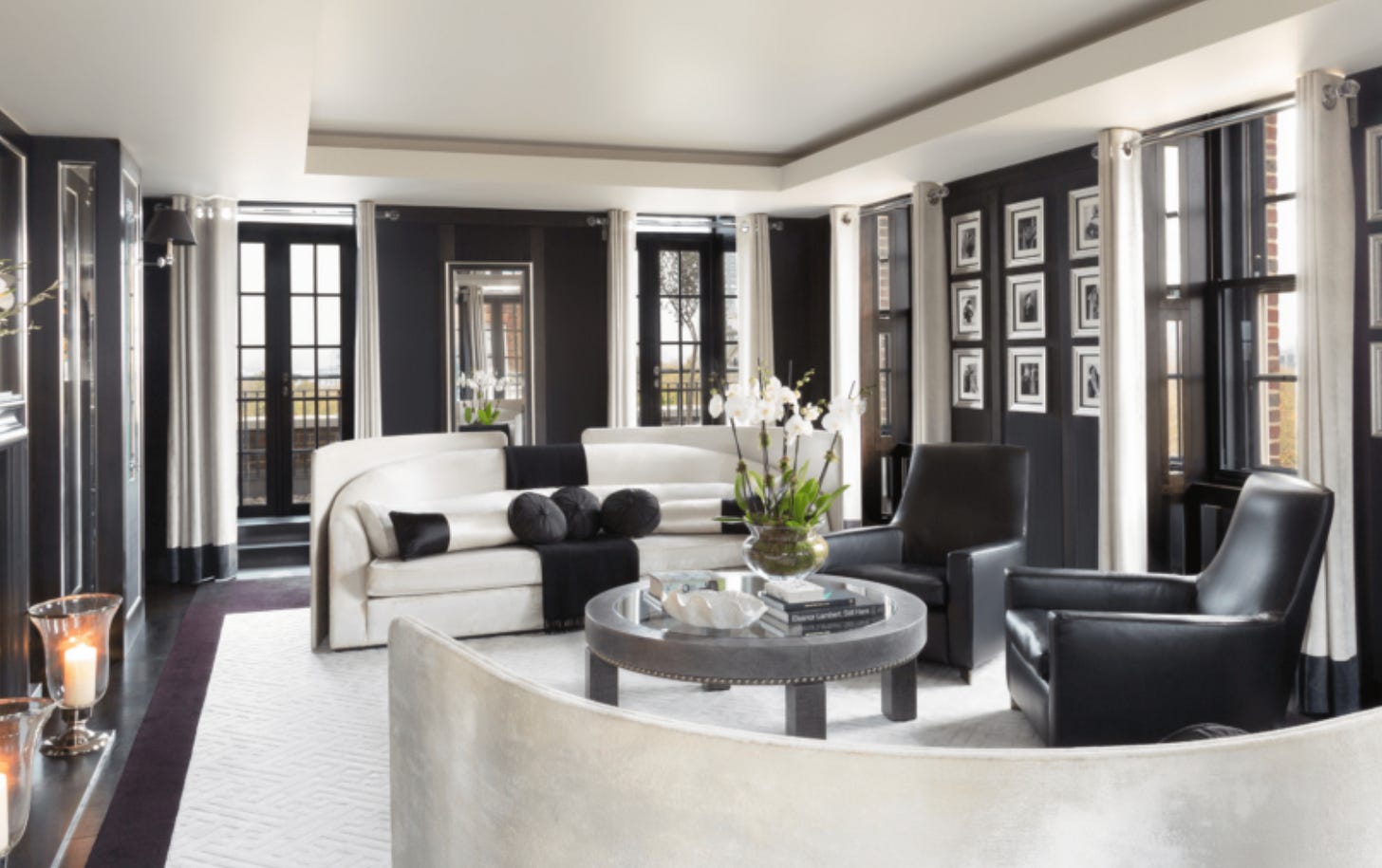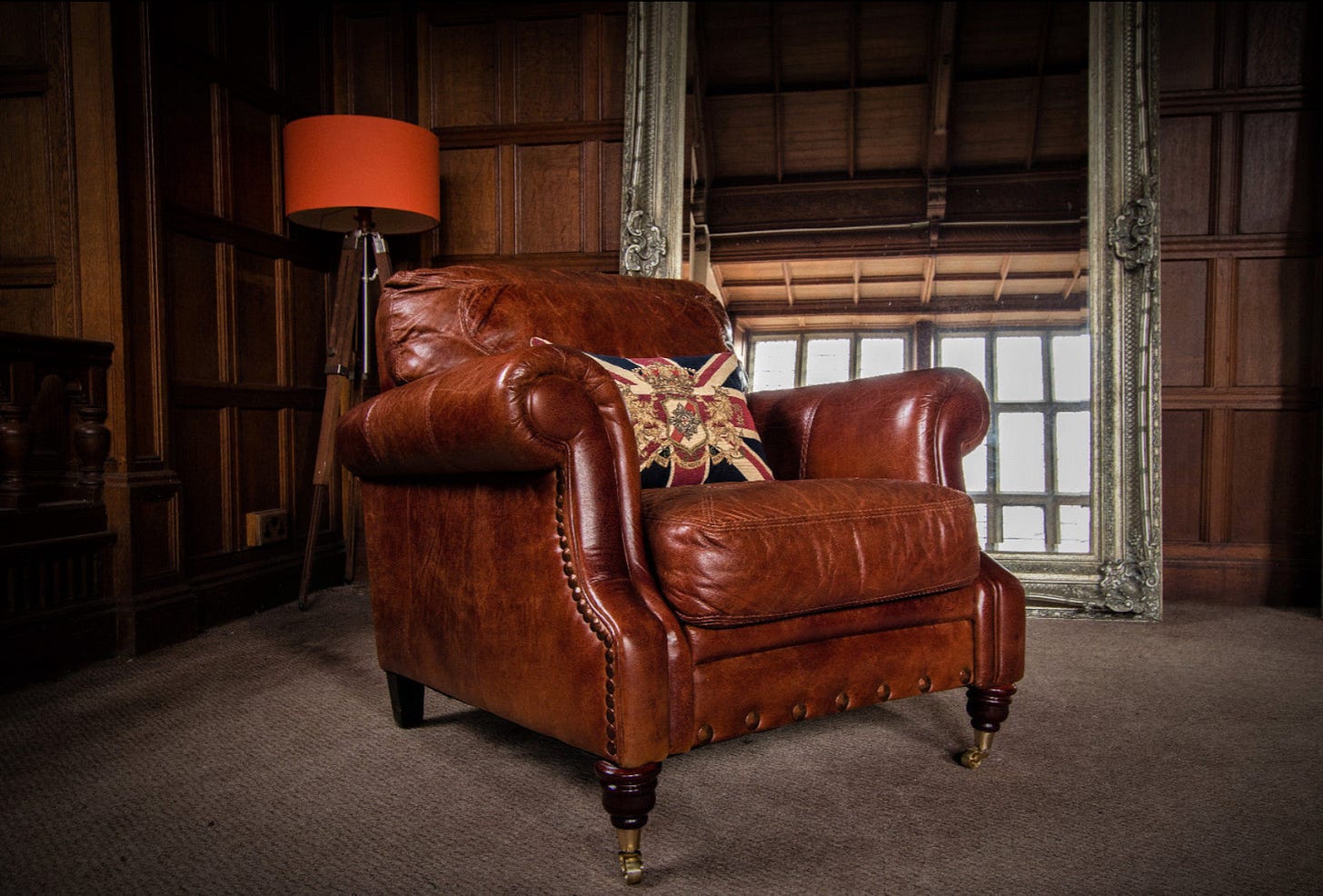After the wildfires destroyed our town in January, LA lost some of its shine, so we decided to move to London for the summer. As an Australian-Angeleno, I was actually surprised by how down I felt after the fires, so I was also thankful for the chance to be somewhere else for a while.
We’d lived in London as newlyweds before we had kids, so being back here felt familiar and comforting. And even though much of this superficial familiarity has remained, I'm starting to gain a better appreciation for the deeper levels of coolness that make this city so unique.
Here’s just one example.
When £800 Buys You a Showroom, Not a Story
A few weeks back, a friend of mine who was in London for business invited me to meet him at his hotel in Mayfair. His room was absolutely perfect, as one would expect for £800 per night. Each surface was polished to a mirror shine. Not a single scuff mark. The bedsheets had hospital corners so sharp they could cut glass. The bathroom marble was so pristine it looked like a Rolex showroom.
All this high polish reminded me of the luxuriousness I’d grown accustomed to in Los Angeles and New York. But this new level of glitz and glamour was completely wrong for London. Because here's what I think makes this city’s luxury so distinctive:
London luxury is beautifully shabby.
The Delightful Luxury of Imperfection
The most delightful and memorable lux experiences I've had since arriving have been wonderfully imperfect:
A Michelin-starred gastropub in Fitzrovia where the 200-year-old wooden floors creak under your feet
£2,000 bespoke suits that I pass by while strolling Savile Row don’t even try to disguise the tailor's chalk marks, still faintly visible on the fabric
A vintage champagne tasting at The Royal Thames Yacht Club in Knightsbridge, held in an oak-paneled room festooned with replicas of sailing vessels going back to 1775
A boutique hotel in Soho where original Warhol’s have been plonked haphazardly alongside modern art, each telling their own story and giving the hotel a distinct sense of place
This is luxury that's been lived in. Timeworn. Scuffed and scratched. Assembled by hand, often from discarded bits and offcuts. It's the opposite of Rodeo Drive luxury, with its pristine surfaces and Instagrammable perfection.
When I mentioned this to a new business contact I met here, she laughed scornfully: "Americans always want everything to look like it just came out of the box. We prefer things that look like they've earned their place."
Why Your Marble Countertops Should Have Memories
Why does this matter? Well, I think it’s got everything to do with provenance, authenticity and tactility. The preservation of local culture and the celebration of local craft as a bulwark against the luxury industry’s obsession with erasing difference in pursuit of global consistency.
Speaking of pursuits, remember when Toyota launched Lexus in the early 1990s with "The Relentless Pursuit of Perfection"? It was a brilliant brand platform that spoke to American luxury consumers' obsession with flawlessness. Lexus’ pursuit of perfection signaled to US auto buyers, “We get you and your obsession with things that represent the highest standards in the world.”
Thinking back, it could be argued that Lexus’ tagline defined an entire era of luxury brand marketing. Ultra-premium vodka filtered not just once or twice, but ten times. Luxury watches that could sustain 300 atmospheres of pressure. Hotel bedsheets made of 800 thread count Egyptian cotton.
Perfection Is the Enemy of Character
Since I've been back in Europe, I can see the irony of this arms race. Luxury is a broad church and not everything luxurious comes from pursuing perfection. It’s also about heritage, craft, and the beautiful imperfections that come from human hands and the passage of time.
Time-faded tapestries hung casually in Windsor Castle. Pre-loved handbags from early-era Mulberry. A 1972 Land Rover Defender sans its roof, windscreen and doors. Frayed rowing club blazers worn by geezers who haven’t swept an oar over for 50 years.
I guess what I’m advocating here is for a new era of SCRUFFY LUXURY.
I don't mean visually unpleasant or dirty. But unkempt in the sense that it was created by humans, for humans. A craft passed forward over generations by the artisans who originally invented it. Luxury that makes us feel special because of the stories it can tell, the characters that have inhabited it, and the scratches that prove that real people were involved in its creation.
When Pristine Becomes A Prison
I've worked with world-leading luxury brands for over two decades. I've seen hundreds of creative briefs that talk about "flawless" this and "pristine" that.
But the most discerning luxury consumers I meet these days, particularly younger ones, aren't buying perfection anymore. They're buying pedigree. Character. Soul. Story.
They want the worn brass door handle that's been polished by thousands of hands. The marble bar top with wine stains that tell tall tales. The vintage chair with the perfect amount of patina. Beers made from hops grown by farmers with strange accents.
In short, the type of luxury that can be found everywhere throughout London and the UK.
We have thousands of luxury brands creating perfect experiences. But we have very few creating beautifully imperfect ones. Maybe it’s the headspace I’m in at the moment but maybe it’s time that the luxury goods industry showed us its shabby side.
If you own or run a luxury brand, here’s my question. Are you creating perfect experiences or perfectly human ones? It’s not a perfect space but maybe it’s a white space worth exploring?







It's a very good point about how we Europeans view Luxury. It's why our old Victorian and Georgian houses are more sought after than characterless white box new build houses, regardless of the fact they have better services, and mod cons. We want to feel like we are part of something bigger, not starting something afresh. One of the biggest Insults a British person can say about something is 'it's Soulless' - and you're right that's how we view Rodeo Drive.